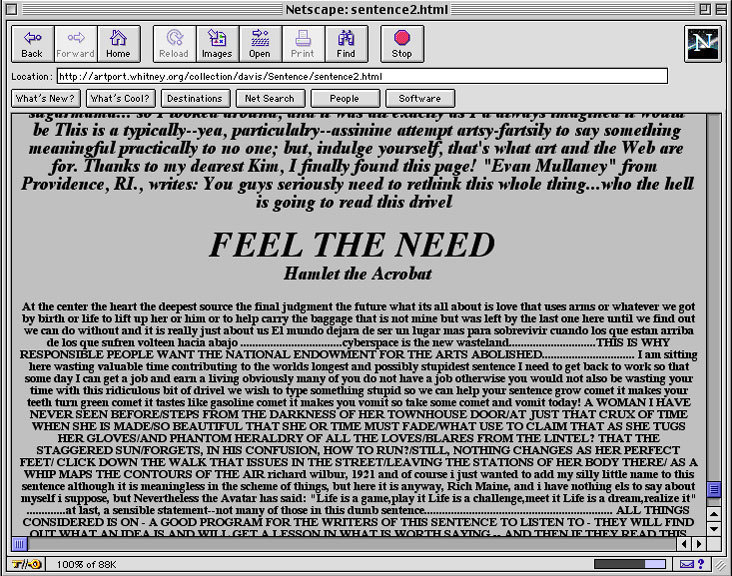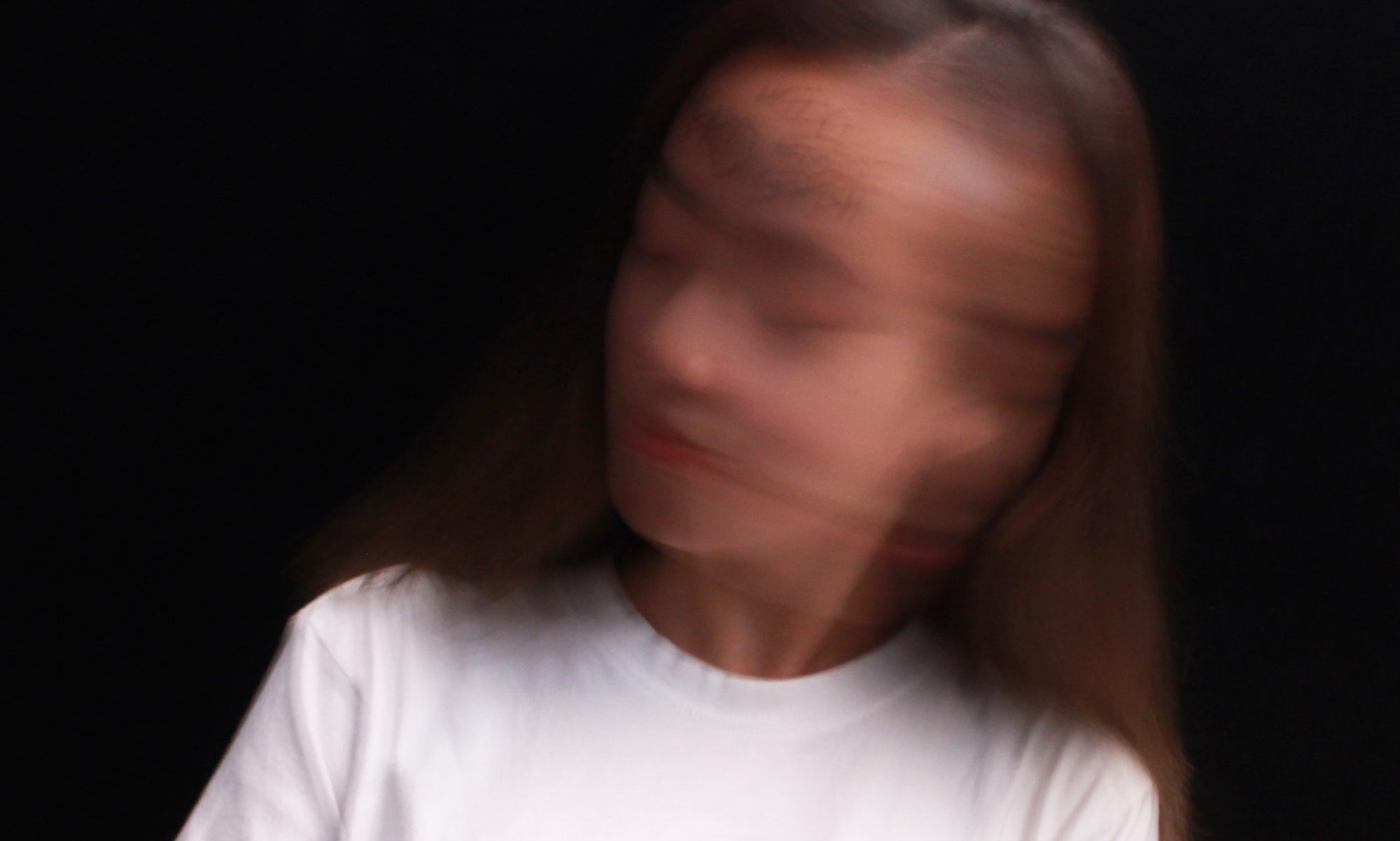
Douglas Davis, the creator of one of the earliest artwork on the world wide web, The World’s First Collaborative Sentence 1994. It allows everyone to contribute words, video, photographs, sounds and etc. to this long sentence in the collective third space. It was commissioned by the Lehman College Art Gallery, Bronx, N.Y. and The City University of New York, with the assistance of Gary Welz, Robert Schneider, and Susan Hoeltzel. Up to date, there are two versions of the sentence. One is the historical version and another is open to new contributions.

The sentences added are various, as it had been edited for a lot of time by Anonym. I contributed to the new version of the sentence that came to my mind when I was doing the research (screenshots above). I am now part of this collective artwork. So there is the question, who is the author of this online artwork? According to the essay, The Work of Art in the Age of Digital Reproduction (An Evolving Thesis: 1991-1995) by Douglas Davis, this is the first artwork that is multiple in authorship. It also has unconventional time-scales, since it can be edited anytime.

https://cdn.makeuseof.com/wp-content/uploads/2016/12/Duolingo-logo-994×400.jpg
Another example of online collaboration project is called Duolingo, a free language learning platform with 200 million users. It seems to be an ordinary language learning app. However, collaboration is happening seamlessly. The users are actually translating the web while simultaneously learning a language. It extremely costly to employ professionals to translate the webpage, and computer translation is not accurate sometimes. Duolingo collects and combines the different versions of the translations to obtain the most accurate result. Translating English Wikipedia to Spanish would take only 80 hours with 1 million users. Moreover, this platform is free for both the users and web translation. Thus, this online collaboration seems to form a common thread among peers.
– Randall Packer
All in all, The World’s First Collaborative Sentence and Duolingo do have something in common that they gathered the “puzzles” around the world to create the piece of work, which is probably impossible to achieve by an individual. It seems that the online collaborations are efficiently creating incredible artwork, and contributing to the human knowledge.
References
https://en.wikipedia.org/wiki/Douglas_Davis_(artist)
http://whitney.org/Exhibitions/Artport/DouglasDavis
https://cdn.makeuseof.com/wp-content/uploads/2016/12/Duolingo-logo-994×400.jpg
https://oss.adm.ntu.edu.sg/17s2-dn1010-tut-g05/wp-content/uploads/sites/2251/2018/01/Open-Source-Studio_Randall-Packer.pdf


Very good! And while it is interesting and relevant to bring in the Duolingo project, I would recommend focusing on the artwork you have been asked to critique, with perhaps a short reference to similar works. The research critiques are so short and compact that it is best to concentrate on the assignment work. One other recommendation, make the images larger when you insert them, there is a menu that allows various sizes, that way they are easier to read without having to click and enlarge. Good research though and glad to see you are grasping the idea of the collective artwork.